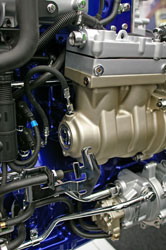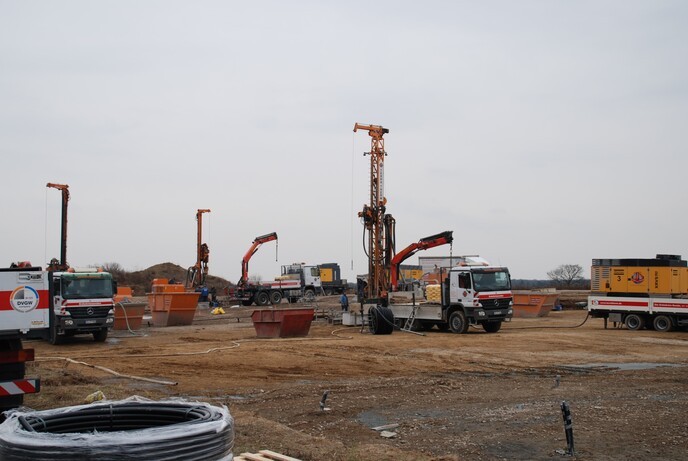Optimising the design of internal combustion engines
Fuel injection systems in the popular automotive diesel engines are required to operate properly at highly varying operational conditions, because fuel pressure drops locally below the vapour pressure. Vapour bubbles form in the fuel, and as vapour subsequently condenses in regions of higher pressure, bubble collapsing loads may lead to cavitation erosion of the injection systems' components. Within the framework of the European project PREVERO, different test configurations were investigated at the laboratories of AVL List GmbH. Experimental studies of the flow inside real-size nozzle geometries revealed the complexity of structures formed over a number of cavitation regimes. In an attempt to gain a better understanding of cavitation flows and their effects on performance and durability of fuel injection systems, discharge coefficient measurements were compared with model predictions. More specifically, a multidimensional Computational Fluid Dynamics (CFD) model accounting for the onset and development of cavitation inside nozzle holes was developed and assessed against the experimental data collected. The effects of the cavitation model's assumptions as well as those of the sub-models for phase-interactions on the predicted results of nozzle discharge were evaluated. Additional considerations of the numerical implementation and of the discretisation scheme were employed to optimise the predictive capability of this mathematical model. Based on the multifluid formulation of multiphase flows, this mathematical model has been validated to the level where it can usefully identify many of the cavitation effects on nozzle performance. Cavitation significantly influences the atomisation process of the emerging fuel, which in turn is one of the key factors affecting the performance and exhaust emissions of injection diesel engines. Implemented in the Eulerian Multiphase module of the commercial code FIRE, cavitation modelling can contribute significantly to fuel injection systems' design and optimisation.







